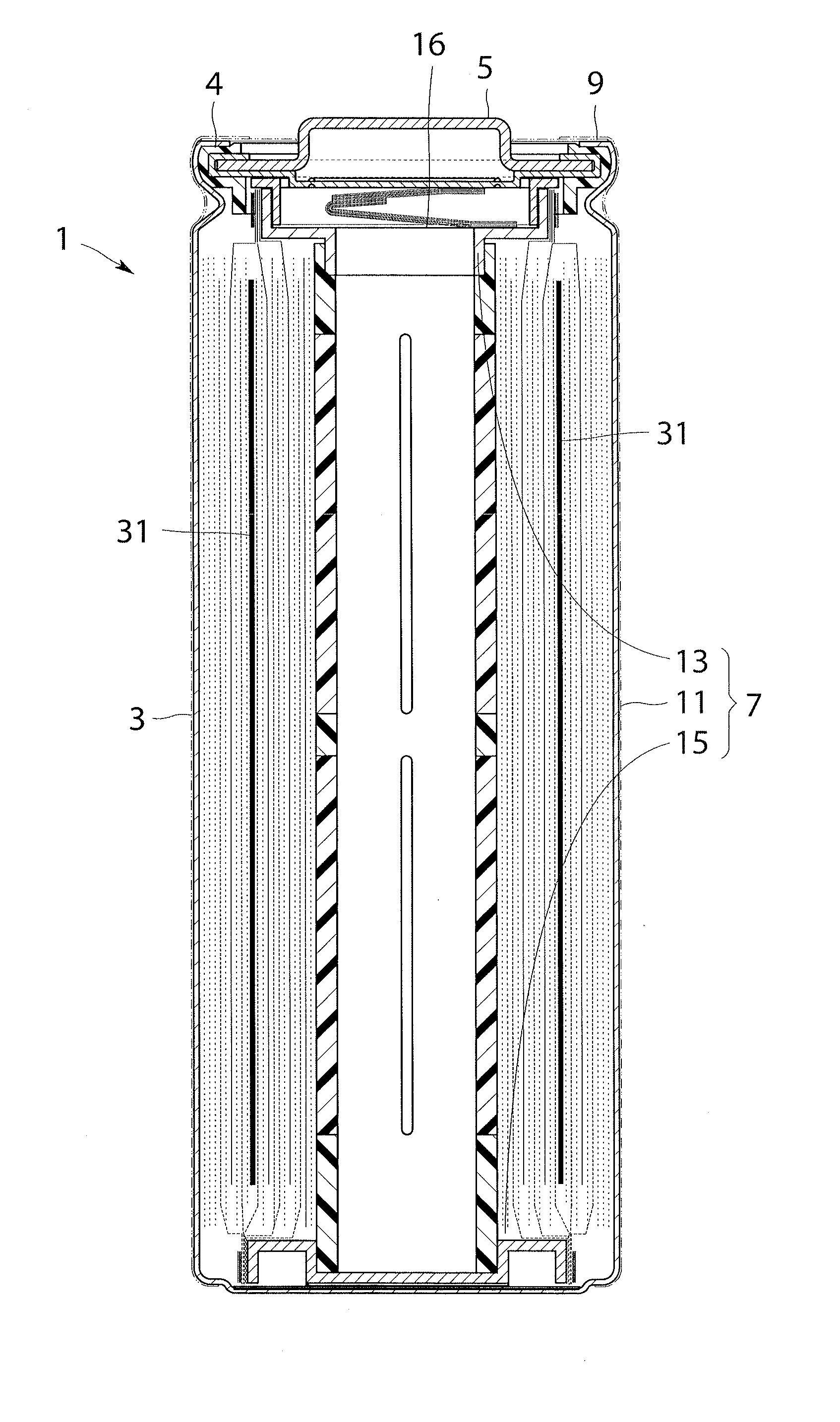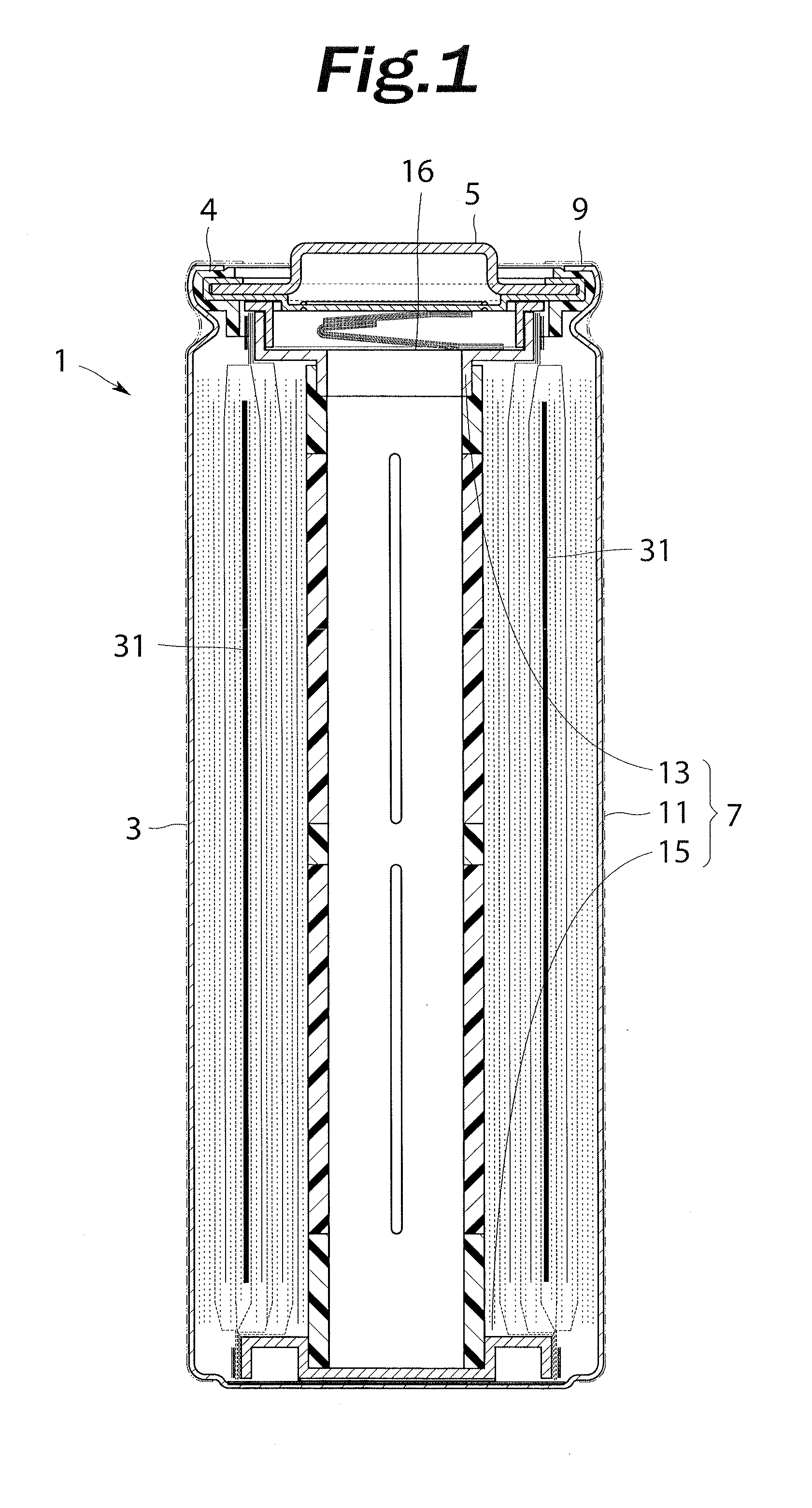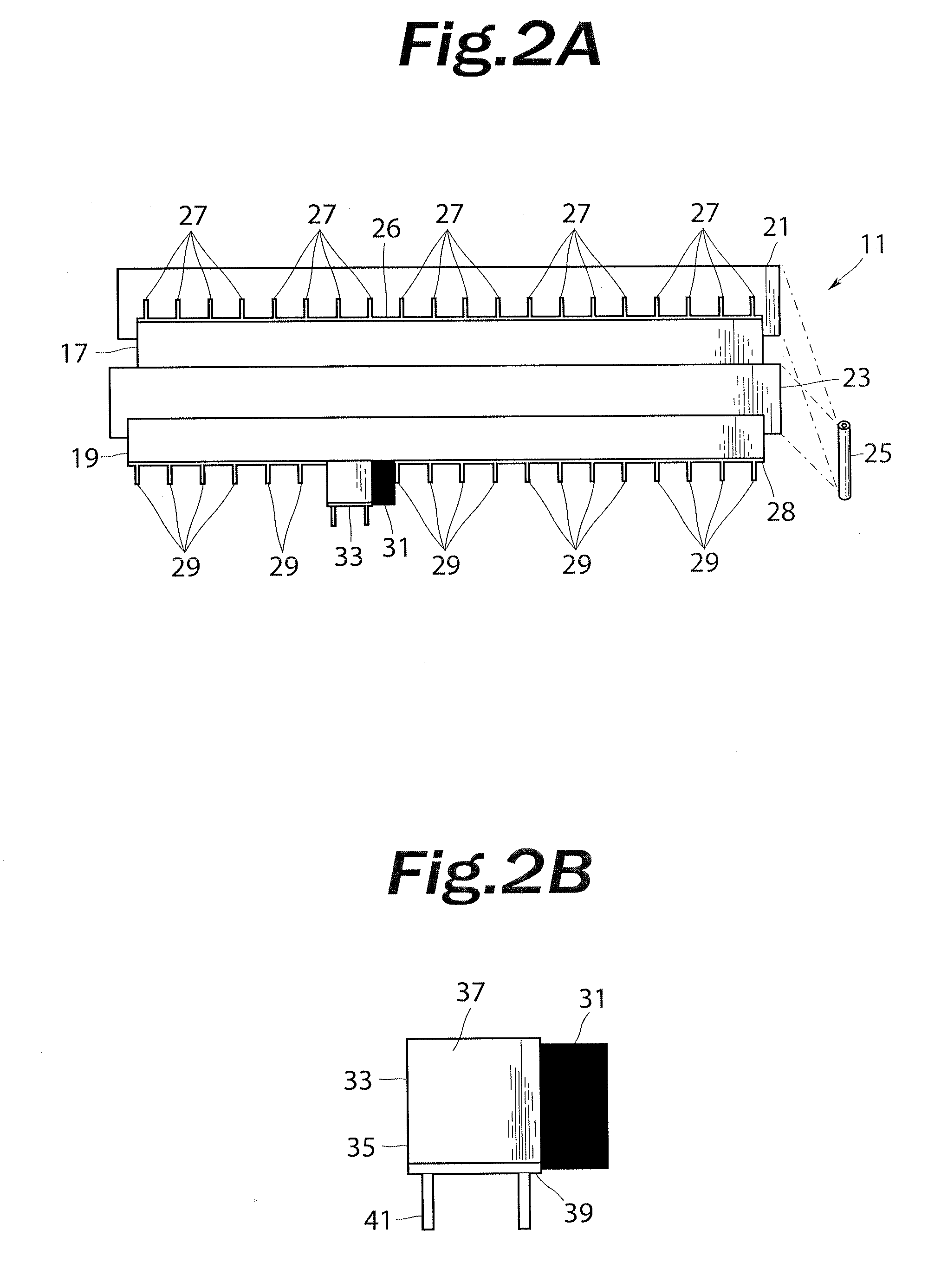Lithium Ion Storage Device
- Summary
- Abstract
- Description
- Claims
- Application Information
AI Technical Summary
Benefits of technology
Problems solved by technology
Method used
Image
Examples
first embodiment
[0021]Embodiments of the present invention will be described in detail below with reference to the drawings. FIG. 1 is a cross-sectional view of a cylindrical lithium ion capacitor according to the present invention taken along the longitudinal direction. In FIG. 1, some of the constituent members of the lithium ion capacitor are not shown. A cylindrical lithium ion capacitor 1 according to the embodiment includes a container body 3, a lid member 5, and an electrode group unit 7. The container body 3 is made of a nickel-plated steel material, and has the shape of a bottomed cylinder with one open end portion. An opening portion 4 of the container body 3 is closed by the lid member 5. The lid member 5 is swaged in the open end portion of the container body 3 via a gasket 9 made of a rubber or a resin having insulation and heat-resistance properties. Therefore, the internal space of the capacitor 1 is hermetically sealed. An non-aqueous electrolyte (not shown) is poured into the capac...
second embodiment
[0033]FIG. 3A schematically shows an electrode group 111 before being wound, which is used in a cylindrical lithium ion capacitor according to the present invention. FIG. 3B shows a lithium metal plate 131, a conductive shielding member 133, and a perforated copper foil 151, which are disposed in the electrode group 111, as enlarged. In FIGS. 3A and 3B, component parts that are similar to those shown in FIGS. 1, 2A, and 2B are denoted by reference numerals obtained by adding 100 to the reference numerals affixed to their counterparts in FIGS. 1, 2A, and 2B to omit detailed descriptions.
[0034]In the electrode group 111 used in the cylindrical lithium ion capacitor according to the second embodiment, as shown in FIGS. 3A and 3B, the lithium metal plate 131 is not directly affixed to a negative plate 119, and the lithium metal plate 131 is indirectly disposed on the negative plate 119 via the perforated copper foil 151. The perforated copper foil 151 used in the embodiment is formed to...
third embodiment
[0035]FIG. 4A schematically shows an electrode group 211 before being wound, which is used in a cylindrical lithium ion capacitor according to the present invention. FIG. 4B shows a lithium metal plate 231 and a conductive shielding member 233, which are disposed in the electrode group 211, as enlarged. In FIGS. 4A and 4B, component parts that are similar to those shown in FIGS. 1, 2A, and 2B are denoted by reference numerals obtained by adding 200 to the reference numerals affixed to their counterparts in FIGS. 1, 2A, and 2B to omit detailed descriptions.
[0036]In the cylindrical lithium ion capacitor according to the third embodiment, as shown in FIGS. 4A and 4B, the lithium metal plate 231 is disposed in the electrode group 211 such that the lithium metal plate 231 is sandwiched in the conductive shielding member 233 in a folded state. The conductive shielding member 233 according to the embodiment is configured such that a negative active material layer (not shown) is formed on o...
PUM
 Login to View More
Login to View More Abstract
Description
Claims
Application Information
 Login to View More
Login to View More - R&D
- Intellectual Property
- Life Sciences
- Materials
- Tech Scout
- Unparalleled Data Quality
- Higher Quality Content
- 60% Fewer Hallucinations
Browse by: Latest US Patents, China's latest patents, Technical Efficacy Thesaurus, Application Domain, Technology Topic, Popular Technical Reports.
© 2025 PatSnap. All rights reserved.Legal|Privacy policy|Modern Slavery Act Transparency Statement|Sitemap|About US| Contact US: help@patsnap.com



